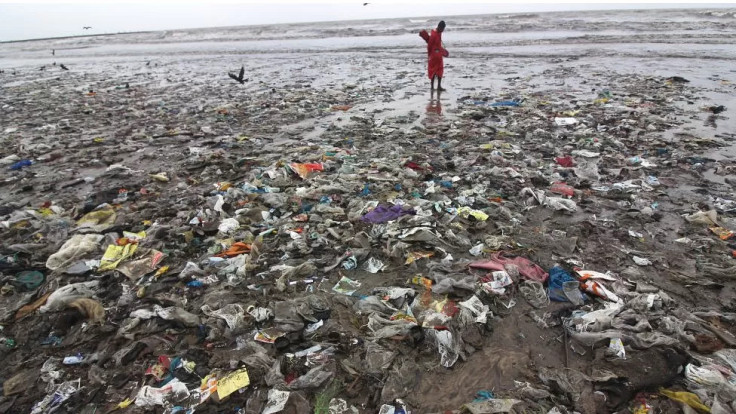Microplastics Found In Clouds, Could Cause Irreversible Damage, Warns Scientists
The team found as many as nine different kinds of polymer particles and a type of rubber particle in cloud mist.

A study by a team of researchers from Japan found microplastics inside rain clouds. The tiny particles were found in the mist samples collected from the peaks of Mount Fuji and Mount Oyama.
The team found as many as nine different kinds of polymer particles and a type of rubber particle.
These tiny particles have also been found in the most remote regions of the Arctic and Antarctica to the deep seafloor. They are practically everywhere.
In the study published in the journal Environmental Chemistry Letters, the researchers stated that these airborne microplastics (AMPs) could be actively contributing to climate change as "plastic rainfall".
The team found between 6.7 and 13.9 pieces of plastic in each litre (0.26 gallon) of cloud water tested for plastic pollution.
"If the issue of 'plastic air pollution' is not addressed proactively, climate change and ecological risks may become a reality, causing irreversible and serious environmental damage in the future," said Hiroshi Okochi, the study's lead author.
The plastic scourge:
Microplastics are tiny plastic particles up to 5mm in diameter. A study by the University of Georgia highlighted the fact that 91% of the world's plastic is not recycled. Plastic is everywhere and animals both on land and at sea mistakenly consume it, and microscopic particles can be found in the air and oceans.
They are found in synthetic blankets, fleece, or shirts and in beauty products such as skin cleansers and scrubs. Even some toothpaste variants contain these tiny particles, according to a study by the United Nations Environment Programme. Microplastics have even been discovered in human hearts, lungs, and blood.
Several studies have shown that microparticles can also be ingested by filter-feeding marine organisms such as oysters and mussels. They do not get filtered out during sewage treatment and manage to make their way to oceans, seas, rivers, and lakes.
Last year, a study by researchers from the UK found microplastics deep in the lungs of living people for the first time. The tiny particles were found in 11 of the 13 samples tested for their presence.
The most common particles found in the lung tissues included polypropylene, used in plastic packaging and pipes, and PET, used in bottles. The microplastics discovered in the lung tissues were likely inhaled from plastics used in packaging, bottles, clothing, rope and twine, and many manufacturing processes.
A 2021 study also found microplastics in autopsy samples taken from 20 bodies. The researchers then concluded: "Deleterious health outcomes may be related to these contaminants in the respiratory system following inhalation."
Microplastics were also found in human blood in a study conducted by scientists in the Netherlands and published in March 2022. The researchers had then taken samples from 22 anonymous donors, and 17 of the 22 samples had microplastics.
Microplastics are not just harmful to humans; they have had a similar impact on marine life. In 2016, a study conducted by scientists at Uppsala University in Sweden found that European perch larvae raised in microplastic-contaminated water had stunted growth.
The studies mentioned above are not the only ones that have highlighted the dangers associated with the continued and blind use of plastic. Over the years, hundreds of studies have issued warnings against plastics. Governments across the world need to join hands and work out a solution to the problem before it is too late.
A 2020 study revealed that people may be consuming plastics equivalent to the size of a credit card every week.
The scientists believe that if people continue consuming microplastics at the present rate, there will come a time when the threshold levels will be surpassed. When this happens, harm will not only fall upon the environment but also on humans.
© Copyright IBTimes 2025. All rights reserved.






















